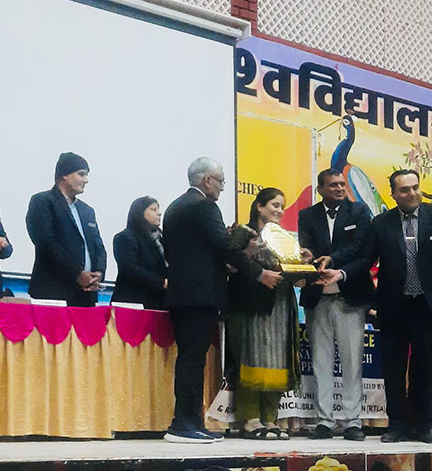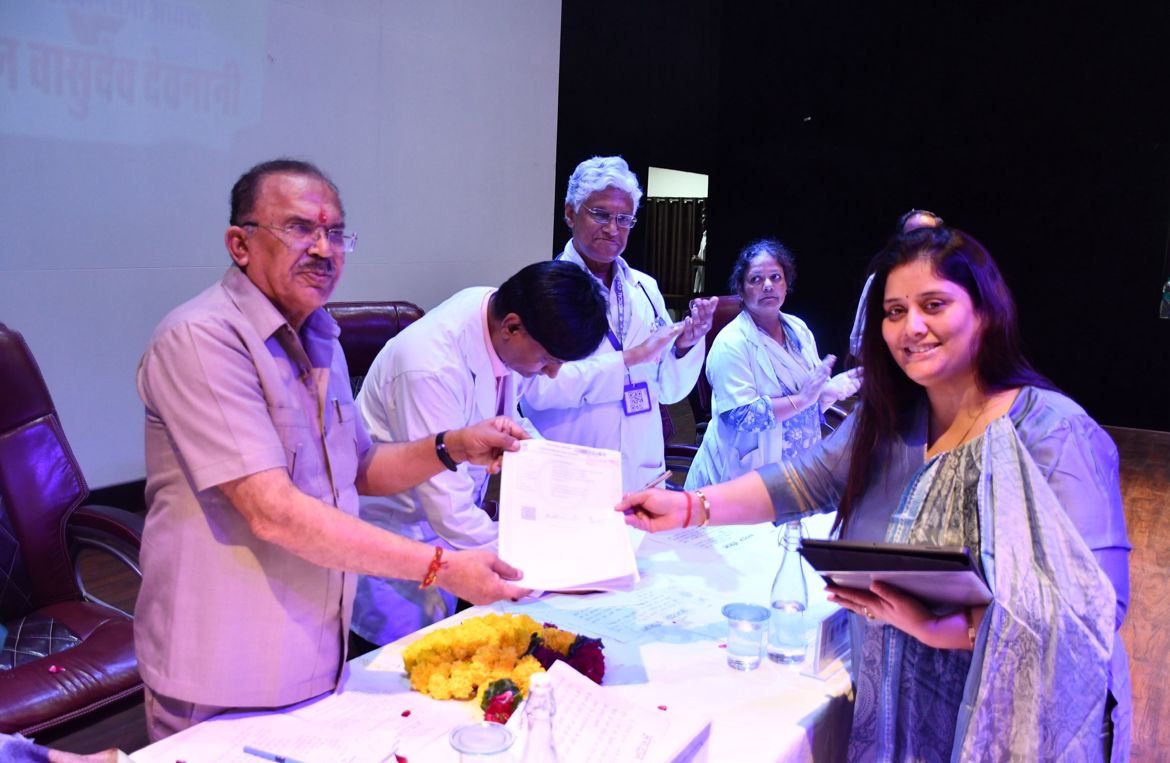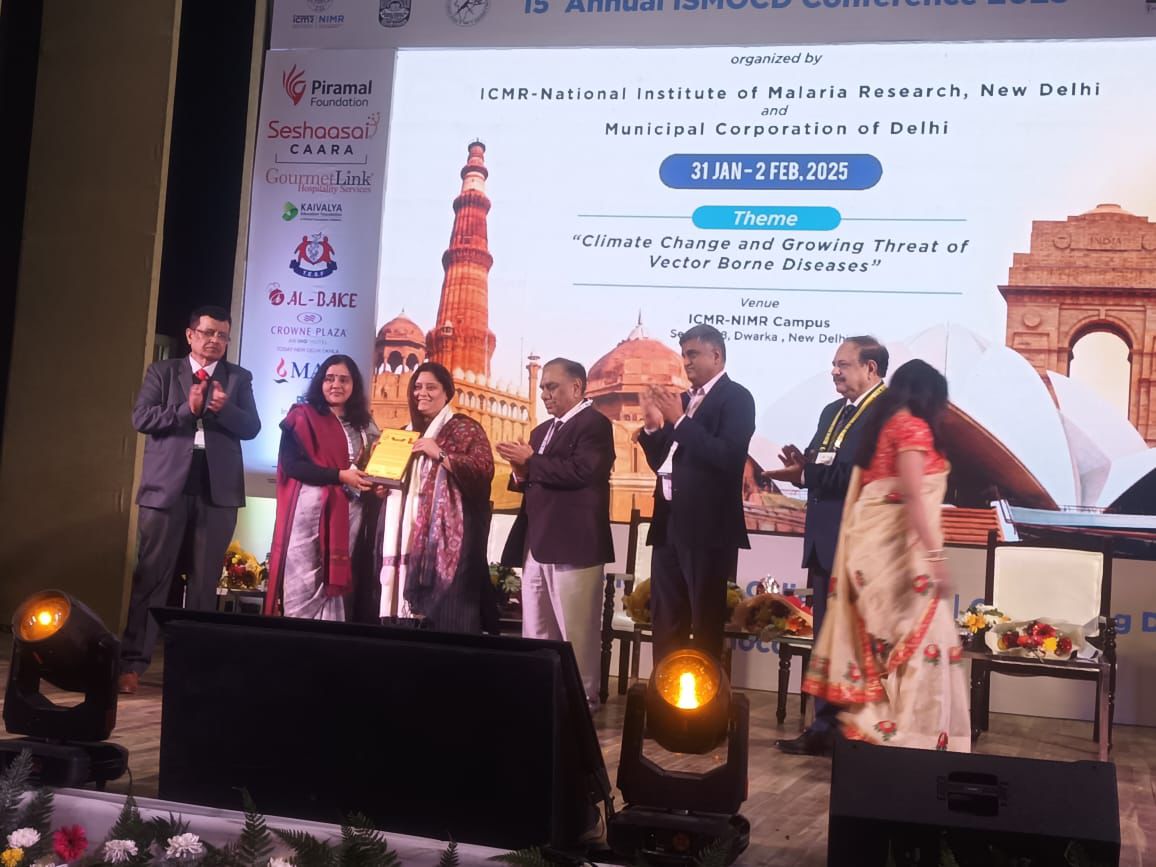-
1. Presenting the newest issue of Vol. 57 No. 3 (2025): Journal of Communicable Diseases
..
Read more ›
-
2. Presenting the newest issue of Journal of Advanced Research in Geo Sciences & Remote Sensing Vol. 12 No. 3&4 2025
..
Read more ›
-
3. Presenting the newest issue of Journal of Advanced Research in Civil and Environmental Engineering Vol. 12 No. 1 2025
..
Read more ›
-
4. Presenting the newest issue of Journal of Advanced Research in Alternative Energy, Environment and Ecology Vol. 12 No. 3&4 2025
..
Read more ›
-
5. Presenting the newest issue of Journal of Advanced Research in Agriculture Science and Technology Vol. 8 No. 1 2025
..
Read more ›
-
6. Presenting the newest issue of International Journal of Agriculture, Environment and Sustainability Vol. 7 No. 1 2025
..
Read more ›
-
7. Presenting the newest issue of Recent Trends in Pharmaceutical Technology & Industries Vol. 7 No. 2 2025
..
Read more ›
-
8. Presenting the newest issue of Asian Journal of Herbal Medicine and Phytochemistry Research Vol. 1 No. 2 2025
..
Read more ›
-
9. Presenting the newest issue of Journal of Advanced Research in Humanities and Social Sciences Vol. 12 No. 3 2025
..
Read more ›
-
10. Presenting the newest issue of Journal of Advanced Research in English and Education Vol. 10 No. 3 2025
..
Read more ›
-
11. Presenting the newest issue of Journal of Advanced Research in Applied Mathematics and Statistics Vol. 10 No. 1&2 2025
..
Read more ›
-
12. Presenting the newest issue of Journal of Advanced Research in Applied Chemistry and Chemical Engineering Vol. 8 No. 1 2025
..
Read more ›
-
13. Presenting the newest issue of Journal of Advanced Research in Applied Physics and Applications Vol. 8 No. 1 2025
..
Read more ›
-
14. Presenting the newest issue of International Journal of Advance Research in Peace, Harmony and Education Vol. 10 No. 2 2025
..
Read more ›
-
15. Presenting the newest issue of Journal of Advanced Research in Library and Information Science Vol. 12 No. 2 2025
..
Read more ›
-
16. Presenting the newest issue of Journal of Advanced Research in Food Science and Nutrition Vol. 8 No. 1 2025
..
Read more ›
-
17. Presenting the newest issue of Journal of Advanced Research in Biology Vol. 8 No. 1 2025
..
Read more ›
-
18. Presenting the newest issue of Journal of Surgical Nursing and Allied Health Sciences Vol. 1 No. 1 2025
..
Read more ›
-
19. Presenting the newest issue of Indian Journal of Advanced Nursing Care and Health Studies Vol. 1 No. 1 2025
..
Read more ›
-
20. Presenting the newest issue of Indian Journal of Holistic Nursing Vol. 16 No. 1 2025
..
Read more ›
-
21. Presenting the newest issue of Trends in Nursing Administration and Education Vol. 14 No. 2 2025
..
Read more ›
-
22. Presenting the newest issue of International Journal of Nursing and Midwifery Research Vol. 12 No. 2 2025
..
Read more ›
-
23. Presenting the newest issue of Journal of Advanced Research in Medicine Vol. 12 No. 1 2025
..
Read more ›
-
24. Presenting the newest issue of Journal of Advanced Research in Ayurveda, Yoga, Unani, Siddha and Homeopathy Vol. 12 No. 3&4 2025
..
Read more ›
-
25. Presenting the newest issue of Recent Advances in Pathology & Laboratory Medicine Vol. 11 No. 1&2 2025
..
Read more ›
-
26. Presenting the newest issue of Journal of Advanced Research in Medical Science and Technology Vol. 12 No. 3&4 2025
..
Read more ›
-
27. Presenting the newest issue of Journal of Advanced Research in Dental and Oral Health Vol. 10 No. 1&2 2025
..
Read more ›
-
28. Presenting the newest issue of International Journal of Preventive, Curative and Community Medicine Vol. 11 No. 3&4 2025
..
Read more ›
-
29. Presenting the newest issue of International Journal of Preventive Cardiology Vol. 4 No. 2 2024
..
Read more ›
-
30. Presenting the newest issue of International Journal of Healthcare Education and Medical Informatics Vol. 12 No. 3&4 2025
..
Read more ›
-
31. Presenting the newest issue of International Journal of Advanced Research in Microbiology and Immunology Vol. 8 No. 1 2025
..
Read more ›
-
32. Presenting the newest issue of International Journal of Advanced Research in Gynaecology and Obstetrics Vol. 3 No. 1 2025
..
Read more ›
-
33. Presenting the newest issue of Indian Journal of Youth and Adolescent Health Vol. 11 No. 4 2024
..
Read more ›
-
34. Presenting the newest issue of Journal of Communicable Diseases Vol. 57 No. 2 2025
..
Read more ›
-
35. Presenting the newest issue of IAP Journal of Medical Education and Research Vol. 1 No. 1 2024
..
Read more ›
-
36. Presenting the newest issue of Epidemiology International Journal Vol. 10 No. 1 2025
..
Read more ›
-
37. Presenting the newest issue of Chettinad Health City Medical Journal Vol. 14 No. 2 2025
..
Read more ›
-
38. Presenting the newest issue of APCRI Journal Vol. 27 No. 1 2025
..
Read more ›
-
39. Advanced Research Publications announces the 13th International Library Information Professionals Summit (I-LIPS)
International Conference on Emerging Technologies for Smart Libraries: AI, IoT & Empowerment Organised by JECRC Foundation in collaboration with School of Engineering & Technology and School of Computer Applications, JECRC University..
Read more ›
-
40. The latest edition of Vol. 14 No. 2 (2025): Chettinad Health City Medical Journal has been released
..
Read more ›
-
41. Presenting the newest issue of Vol. 27 No. 1 (2025): APCRI Journal
..
Read more ›
-
42. Presenting the newest issue of Vol. 57 No. 2 (2025): Journal of Communicable Diseases
..
Read more ›
-
43. Presenting the Special issue of Journal of Advanced Research in Applied Mathematics and Statistics
..
Read more ›
-
44. Presenting the newest issue of International Journal of Advanced Research in Peace, Harmony and Education Vol. 9 No. 1 2024
..
Read more ›
-
45. Presenting the newest issue of Journal of Advanced Research in Alternative Energy, Environment and Ecology Vol. 11 No. 1&2 2024
..
Read more ›
-
46. Presenting the newest issue of Journal of Advanced Research in Humanities and Social Sciences Vol. 11 No. 1 2024
..
Read more ›
-
47. Presenting the newest issue of Journal of Advanced Research in Journalism and Mass Communication Vol. 11 No. 1&2 2024
..
Read more ›
-
48. Presenting the newest issue of Journal of Advanced Research in Accounting and Finance Management Vol. 6 No. 1 2024
..
Read more ›
-
49. Presenting the newest issue of Journal of Advanced Research in Business Law and Technology Management Vol. 7 No. 1 2024
..
Read more ›
-
50. Presenting the newest issue of Journal of Advanced Research in Economics and Business Management Vol. 7 No. 1 2024
..
Read more ›
-
51. Presenting the newest issue of Journal of Advanced Research in Entrepreneurship, Innovation & SMES Management Vol. 7 No. 1 2024
..
Read more ›
-
52. Presenting the newest issue of Journal of Advanced Research in HR and Organizational Management Vol. 11 No. 1&2 2024
..
Read more ›
-
53. Presenting the newest issue of Journal of Advanced Research in Operational and Marketing Management Vol. 7 No. 1 2024
..
Read more ›
-
54. Presenting the newest issue of Journal of Advanced Research in Quality Control and Management Vol. 9 No. 1 2024
..
Read more ›
-
55. Presenting the newest issue of Journal of Advanced Research in Service Management Vol. 7 No. 1 2024
..
Read more ›
-
56. Presenting the newest issue of Journal of Advanced Research in Public Policy and Administration Vol. 6 No. 1 2024
..
Read more ›
-
57. Presenting the newest issue of International Journal of Law, Human Rights and Constitutional Studies Vol 6 No 1 2024
..
Read more ›
-
58. The current issue of Vol. 10 No. 4 (2023): International Journal of Nursing & Midwifery Research has been released
..
Read more ›
-
59. We have published Vol. 6 No. 2 (2023): Journal of Advanced Research in Biochemistry and Pharmacology
..
Read more ›
-
60. Presenting the newest issue of Vol. 6 No. 2 (2023): Journal of Advanced Research in Pharmaceutical Sciences and Pharmacology Interventions
..
Read more ›
-
61. We have released Vol 8 No 2 (2023): International Journal of Advanced Research in Peace, Harmony and Education
..
Read more ›
-
62. The current issue of Vol. 8 No. 2 (2023): Journal of Advanced Research in Construction and Urban Architecture has been released
..
Read more ›
-
63. The current issue of Vol. 10 No. 2 (2023): Journal of Advanced Research in Civil and Environmental Engineering has been released
..
Read more ›
-
64. Presenting the newest issue of Vol 10 No 3&4 (2023): Journal of Advanced Research in Alternative Energy, Environment and Ecology
..
Read more ›
-
65. We have released Vol 6 No 2 (2023): Journal of Advanced Research in Applied Chemistry and Chemical Engineering
..
Read more ›
-
66. We have published Vol 10 No 4 (2023): Journal of Advanced Research in Library and Information Science
..
Read more ›
-
67. The latest edition of Vol. 6 No. 2 (2023): Journal of Advanced Research in Food Science and Nutrition has been released
..
Read more ›
-
68. The current issue of Vol. 5 No. 2(2023): Journal of Advanced Research in Public Policy and Administration has been released
..
Read more ›
-
69. https://adrjournalshouse.com/index.php/Journal-OperationalMarketing-Mgt/issue/view/366
..
Read more ›
-
70. We have released Vol. 6 No. 2(2023): Journal of Advanced Research in Operational and Marketing Management
..
Read more ›
-
71. The latest edition of Vol. 6 No. 2(2023): Journal of Advanced Research in Entrepreneurship, Innovation & SMES Management has been released
..
Read more ›
-
72. The current issue of Vol. 6 No. 2(2023): Journal of Advanced Research in Business Law and Technology Management has been released
..
Read more ›
-
73. Presenting the newest issue of Vol. 5 No. 2 (2023): Journal of Advanced Research in Accounting and Finance Management
..
Read more ›
-
74. We have published the Conference Abstract Compilation of Journal of Advanced Research in Medicine Vol. 10 No. 3(A) (2023)
..
Read more ›
-
75. We have published Vol. 10 No. 3 (2023): Indian Journal of Youth and Adolescent Health
..
Read more ›
-
76. The current issue of Vol. 55 No. 4 (2023): Journal of Communicable Diseases has been released
..
Read more ›
-
77. The latest edition of Vol. 12 No. 4 (2023): Chettinad Health City Medical Journal has been released
..
Read more ›
-
78. We have released Vol. 10 No. 3&4 (2023) International Journal of Healthcare Education and Medical Informatics
..
Read more ›
-
79. We have published Journal of Advanced Research in Medical Science & Technology Vol. 10 No. 3&4 (2023)
..
Read more ›
-
80. The current issue of Vol. 1 No. 2 (2023) of International Journal of Advanced Research in Gynaecology and Obstetrics has been released
..
Read more ›
-
81. 12th International Multidisciplinary Conference on Confluence of
..
Read more ›
-
82. Preventing School Absenteeism during Menstruation
..
Read more ›
-
83. Polluted dusty air increases risk for COPD
..
Read more ›
-
84. Vitamin D
..
Read more ›
-
85. Covid19 India
..
Read more ›
-
86. Epidemiology International
..
Read more ›


.jpeg)

















